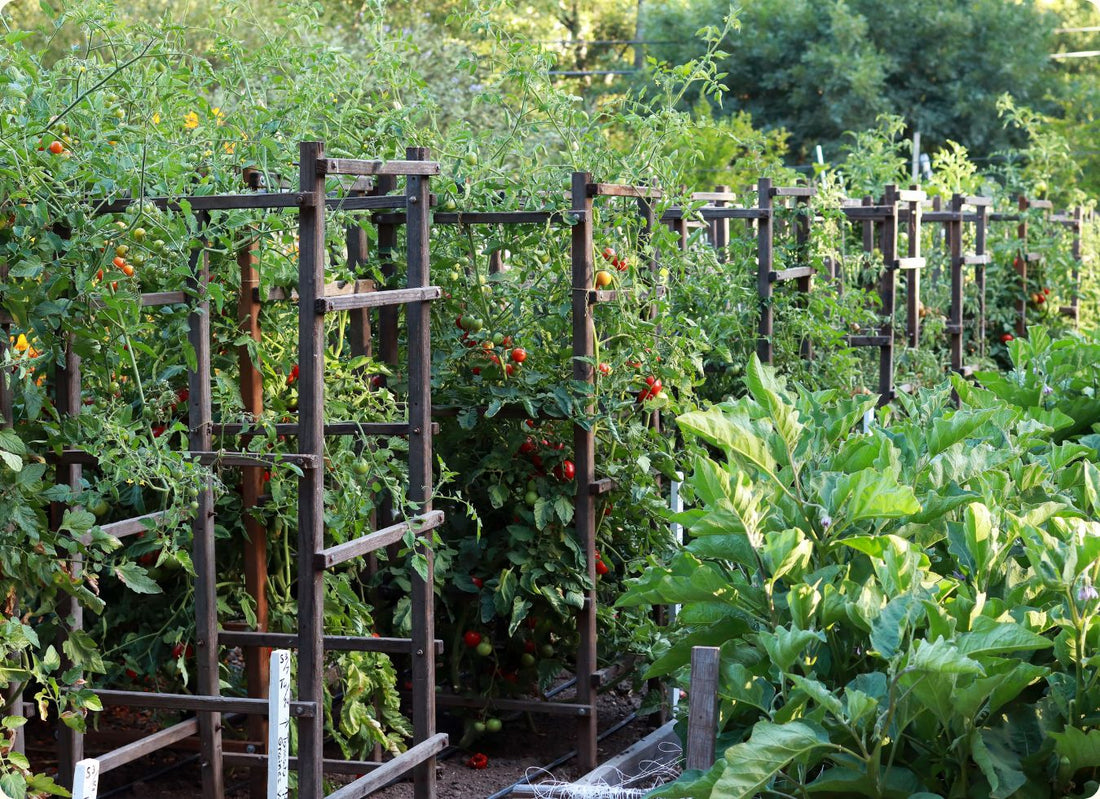

We grow many tomato varieties each and every summer in the trial garden and we've tried many different methods of supporting the tall, vining indeterminate* varieties that grow heavy with fruit and foliage at maturity.
We tried traditional heavy wire cages for a number of years, but found that the large, dense plants got too crowded inside the cages. The packed tomato foliage made it hard to find and harvest all the ripe fruit (especially on cherry tomatoes that bear heavy fruit clusters) and the decreased air circulation at the plant centers made them more susceptible to pests and diseases.
We have also tried staking each plant, placing 2 strong stakes on either side and using twine to hold the plants up, but the big vines with lots of fruit always seem to get away from us by harvest time, with branches at odd angles and heavy vines threatening to topple over. Over the years, we've experimented with different ways of pruning the plants to keep the vines to a manageable size, but not with satisfactory results. All of these methods have been very labor intensive and, in the end, simply did not work very well in our conditions.
Finally, over last two seasons, I have worked out a new support system, with the tomato vines spread up and over angled wire fencing that works great! This method allows the plants to spread out and grow flat on the fencing like an espalier so that the ripe fruit can be easily harvested from either side of the fencing, and can be used for a row of tomatoes or just a single plant.
Here how to build these supports:
You will need a roll of 6 1/2 ft. tall galvanized rabbit/deer fencing. This wire fencing has graduated openings that go from 3 inches at the bottom to 6x8 inch openings at the top. The fencing comes in 100 foot rolls and can be cut to any length. Some landscape supply stores may even cut it to the length desired for you. The height of the fence is tall enough to support these very tall plants. The larger mesh size on the top half is wide enough to be able to reach your hand through the fencing to harvest fruit on either side.
You will need these items, commonly found at hardware stores and retailers nationwide:
- steel fence posts that are at least 7 feet tall
- a post driver to set in the posts
- twine or thin rope
- bamboo poles that are at least 7 feet tall
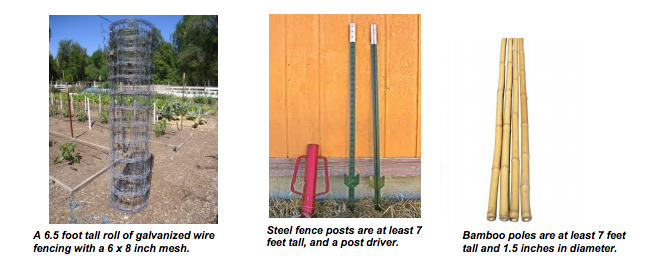
Along a 4 foot wide, 60 foot long garden bed, we have planted the tomatoes in a single row 3 feet apart and 1 foot in from the edge of the bed. Next, we set in steel fence posts every 5 feet and about 12 inches deep along the other side of the tomato plants, so there is 3 feet between the posts and the row of tomatoes. (The posts may be as close as 3 feet apart if you prefer.)
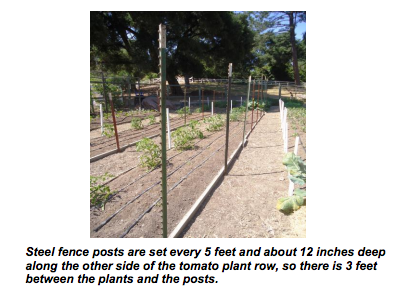
We run a single line of wire fencing that sits 6 inches from the base of the plants, and 2 1/2 feet into the center of the bed. Then lay the fencing diagonally onto the steel fence posts, and place the bamboo poles onto the underside of the fencing every 5 ft. so that the poles line up exactly with the steel fence posts; this will support the fencing so it will not sag with the weight of the plants.
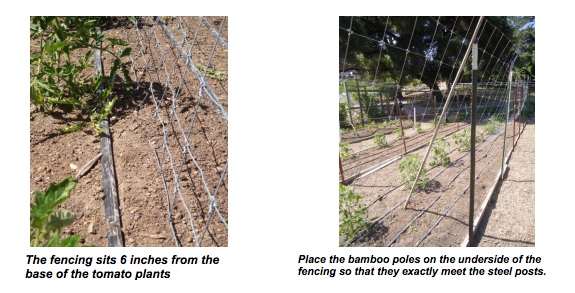
Push the bamboo poles into the soil a few inches so that they do not move. Finally, tie the top of the bamboo to the tops of the steel posts for extra support using a strong material like plastic twine, thin rope or baling wire. Then, tie the bamboo to the fencing every 18 inches down the fencing to make it even more sturdy.
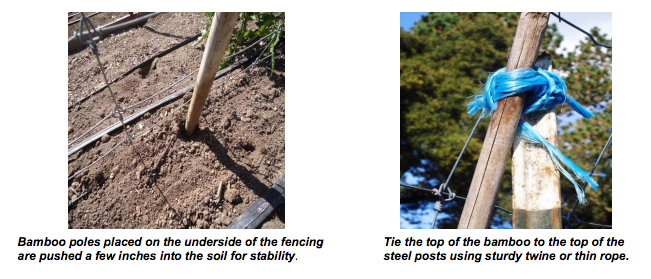
This method will allow tomato vines to grow and spread out flat over on the fencing like an espalier. As the plants grow taller, train them onto the fencing by weaving the stems between the wire. The plants will have good air circulation and sun exposure. Harvesting is a snap since the fruit is more exposed on both sides and dangles nicely from the underside of the fence. You can even plant shade tolerant crops like lettuce and other leafy greens on the underside of the structure.

This method can be used for a long row of tomatoes, or even a single plant, just adjust the structure size to fit your needs. One thing to remember: be sure there is no more than 5 feet between steel posts, because the weight of the plants will cause the fencing to sag.

*Indeterminate tomatoes are the tall vining types that continue growth and fruit production throughout the season. Determinate varieties reach a certain height and then stop growing; plants produce multiple fruit sets. See which variety is determinate or indeterminate.
